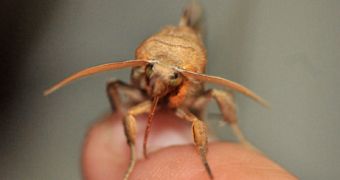Entomologists have recently discovered a variety of bloodsucking moths in Siberia, strikingly similar to the common species that feeds on fruits. The only thing that differentiates this moth species from the regular Calyptra thalictri one is a hardly noticeable variation in the wing patterns. And, of course, the fact that, identical to the behavior during fruit feeding, the new moths penetrated the skin on scientists' hands with their hook-and-barb-lined tongues and began sucking blood.
“Based on geography, based on behavior, and based on a phenotypic variation we saw in the wing pattern, we can speculate that this represents something different, something new,” reveals University of Florida entomologist Jennifer Zaspel from Gainesville. “But it is really difficult to say without knowing genetic differences between individuals in that population, and among individuals from other populations, how different this group is going to be.”
The discovery will prove really important in determining the evolutionary route that this type of moth has taken. On a larger scale, it could mean that we are witnessing a major change in a feeding behavior, which could also shed light on the influencing factors in the past evolution of ancient species.
According to the commonly-accepted theories, the blood diet has its origins in the feeding from tears, manure and infected wounds. As Zaspel states, “We see a progression from nectar feeding and licking or lapping at fruit juices to different kinds of piercing behaviors of fruits and then finally culminating in this skin piercing and blood-feeding.”
As to the reason for which the moths switched to this bloody behavior, experts believe it is related to salt provision. Only the males feed on blood, and they are thought to pass on the salt thus obtained to the females, during mating, aiding them to provide enhanced nutrition to their larvae, which rely on sodium-poor food.

 14 DAY TRIAL //
14 DAY TRIAL //